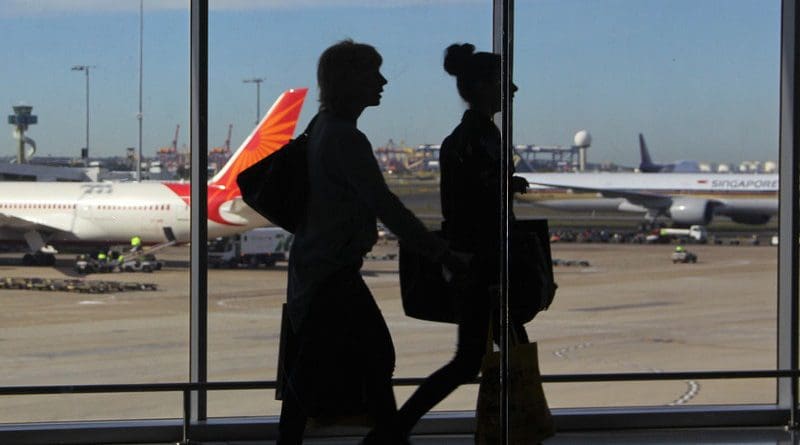Let’s Hope The Pandemic Travel Bubble Doesn’t Burst – Analysis
The impact of COVID-19 on air travel is well known. Last year, “transport bubbles” emerged as temporary arrangements between certain countries aimed at restarting commercial passenger services at a time when regular international flights were suspended. Where we are now in terms of these bubbles and their impact on commerce and connectivity is vitally important for the start of the global economic recovery.
Travel bubbles are essentially an agreement between two or more countries that allow travelers to fly freely between them without on-arrival quarantine requirements. The protocols are supposed to be stringent. In some countries, they can be robust, but others are not helping by not checking vaccination documents accurately. False documentation is becoming a thorn in trying to protect these bubbles from disease infiltration.
The air transport bubble strategy has been successfully implemented between some European and Asian nations, but there is a major issue with the system because of the different pandemic situation in each country. The loss here is measured by the inability to move human capital into what appears to be a dramatically changing labor marketplace, with still unknown sudden shocks and medium-term effects.
Nevertheless, the successful implementation of travel bubbles by France, Germany and the US, and later India, brought about a string of bubbles for travel purposes. The establishment of travel bubbles between some countries, allowing their citizens to travel freely without needing to undergo mandatory on-arrival quarantine, might have a negative impact. Trust — or a lack of it — between governments has been a major factor in bubble development. Some European-US flights have been impacted by certain moves by government authorities. British flights to the Middle East were also part of the trust deficit. The inability of governments to trust each other during a pandemic that so badly impacts aviation and commerce is unacceptable.
In order to “fix” bubble issues, ultra-long-haul flights are part of a necessary solution. ULH flights allow the leveraging of new-age aircraft, thereby saving time-sensitive passengers hours of travel time when compared to a traditional one-stop or hub-and-spoke itinerary. ULH has become an especially preferable option among corporate travelers, which has shaped the available network of routes around the world. Research shows that point-to-point ULH services, with access to a strong domestic feeder system, not only require minimal adjustments to cope with COVID-19, but should produce higher seat-load factors, heightened network flexibility and health benefits tied to its ability to bypass densely populated hub airports. Thus, there is bubble modeling occurring that allows for the emergence of new airline industry standards and regulations moving forward, while coexisting with the pathogen.
COVID-19 is likely to continue to affect bubble protocols as it spreads among the unvaccinated and pops up in key trade nodes, especially ports. While human movement is important for developing capital, there are now the emerging economic effects on supply chains. The mix between aviation requirements and supply chains presents problems that could impact the speed and scope of the global economic recovery and ultimately influence geopolitics. Clearly, the trust factor between particular countries is absent, which promotes instability and political moves that are helping to create new divisions between various world actors.
There is no doubt that travel bubbles give a sense that things are “normal,” in that people can fly again. But all airlines must assume responsibility for implementing stringent preventive measures on board the airplane and at entry and exit points to reduce the risk of pathogen transmission across international borders.

